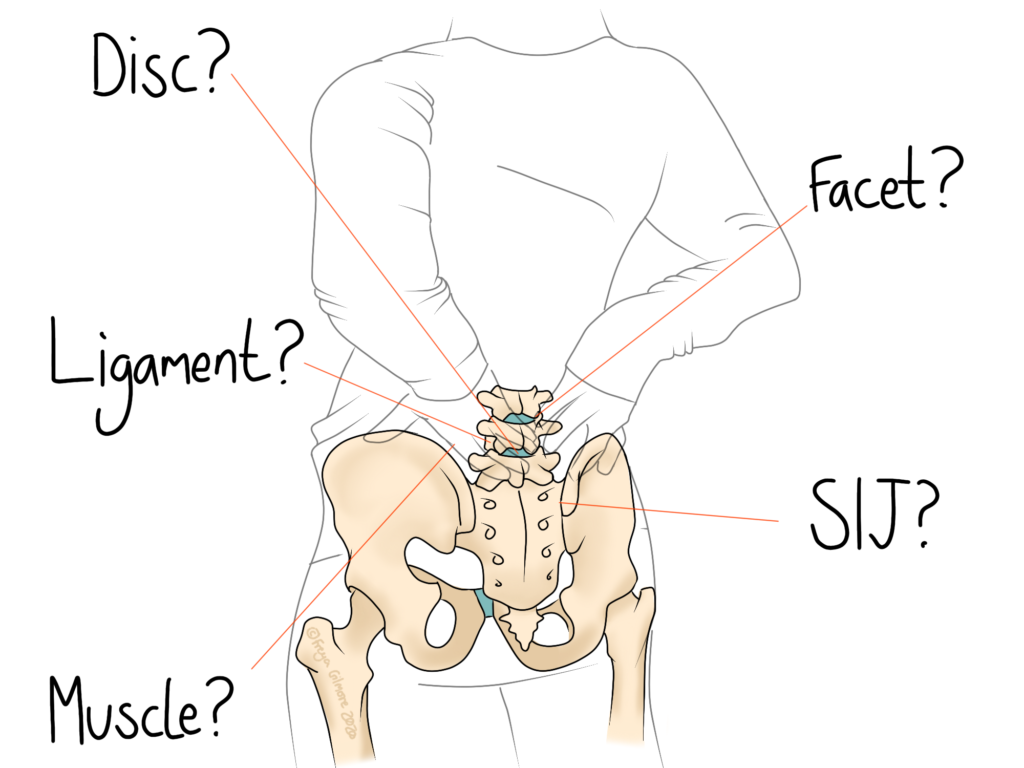Lower Back Pain is a complaint that brings patients to our clinic every day. People often arrive with concern that there is something seriously wrong with their back, or expecting that they will have a degree of this pain forever. The majority of cases of lower back pain are considered “non specific“. This means that they are present without signs of something more worrying such as infection, fracture, or inflammatory disorder.
Non-Specific Lower Back Pain (NSLBP)
Causes of back pain that are considered “non specific” include all of the more minor causes you might expect:
- bulging discs
- muscle strains
- irritated spinal joints
- spondylitis (osteoarthritis of the spine)
- irritation in the sacroiliac joint- where the spine meets the pelvis
All of these conditions are within Beverley’s remit. Technically, sciatica is not classified as NSLBP, but she can still help if this affects you.

Risk factors for Lower Back Pain
There are factors that increase your chances of developing lower back pain that you can’t change, such as having a family history of lower back pain, or a personal history of it. However, there are more that you can change. They include:
- Being inactive and sedentary
- Overworking your back, for example with poor form in a physical job
- Being overweight
All three of these can be helped with a good exercise routine- even the second point. The stronger your back is, the more it takes to overwork it. Just be careful to gradually build up your exercise tolerance, as pushing yourself at the gym as well as at work predisposes you to further risk.
Influence from the Upper Back
Nothing in the body works in isolation, and often we find patterns that give an idea of the factors that led you to your symptoms. Often we find that stiffness in the upper back coincides with lower back pain. Interestingly, this stiffness is often asymptomatic, and the first sign of a problem is the back pain itself.
Upper back stiffness can be the result of a sedentary lifestyle, which we already know to be a risk factor for NSLBP. Sedentary lifestyles can also lead to rounded shoulders as the muscles on the front of the shoulders tighten up and those on the back become weak. If the upper back loses mobility, it is usually the neck and lower back that have to compensate for it. Eventually, a small movement is often the final straw that causes pain, whether that’s due to a muscle strain, bulging disc, or something else.
Osteopathy for your Back Pain
Beverley will take a detailed history and examine you thoroughly to understand the problem. Once she has a diagnosis, including predisposing factors, she can tailor a personal treatment plan for you. This will usually combine work to the joints and soft tissues in clinic with exercises and advice for you to work with at home. Where appropriate, joint work will include spinal manipulation, although if this does not appeal to you, she has alternative methods of achieving the same results. Advice may include changes to your current exercise routine and desk set-up if you are office based.
Click here to make an appointment for your back pain with Beverley Palmer.
